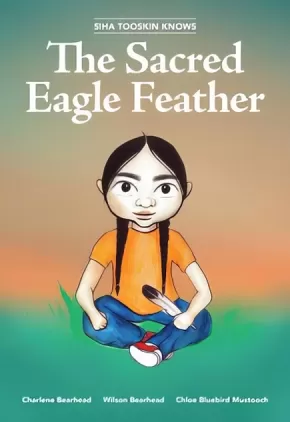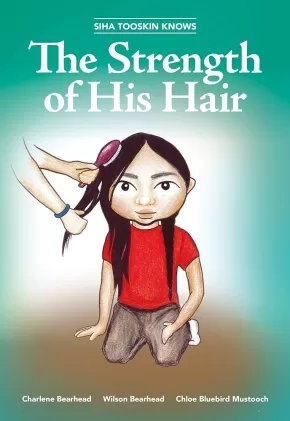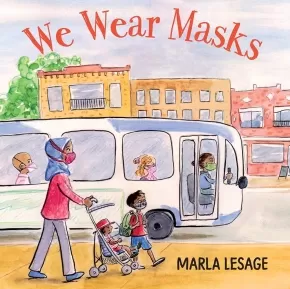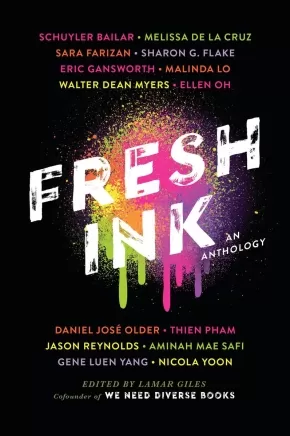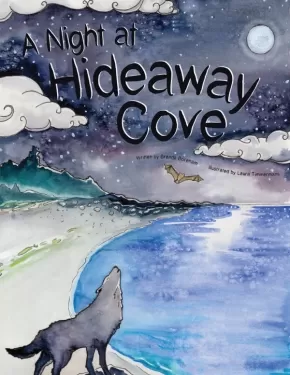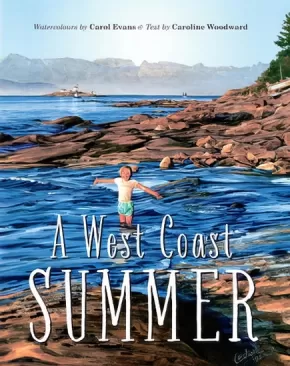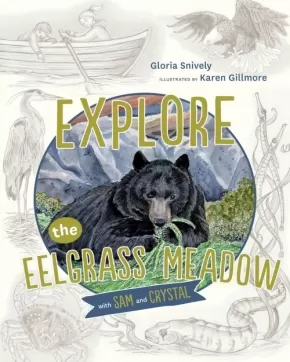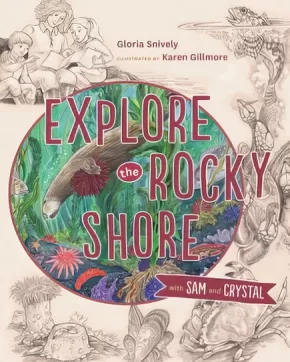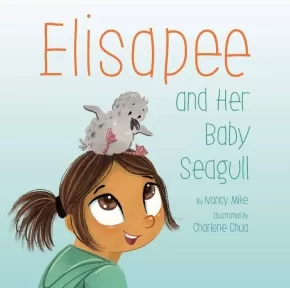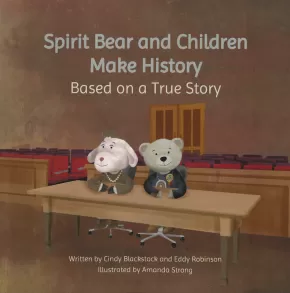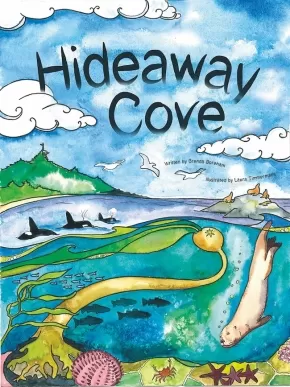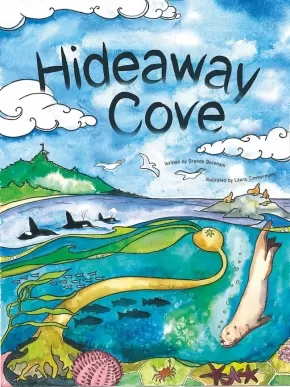
Contemporary Fiction
46
-
60
of
64 Results;
Sort By
Go To
of 5
Siha Tooskin Knows the Sacred Eagle Feather
$11.95
Format:
Paperback
Text Content Territories:
Indigenous Canadian; First Nations; Stoney-Nakoda (Nakota);
ISBN / Barcode: 9781553798491
Synopsis:
Synopsis:
For as long as Paul could remember there were eagle feathers around him…but how had they come to be in all of those places in his life?
Paul Wahasaypa—Siha Tooskin—already knows that the eagle is important because of the way that his family respects and cares for eagle feathers. Now he’s old enough for the teachings of where the feathers come from and why they are so sacred. Walk with Paul and Mitoshin (his grandfather) so you too will understand the teaching of the sacred eagle feather.
The Siha Tooskin Knows series uses vivid narratives and dazzling illustrations in contemporary settings to share stories about an 11-year-old Nakota boy.
Educator & Series Information
The Siha Tooskin Knows series uses vivid narratives and dazzling illustrations in contemporary settings to share stories about an 11-year-old Nakota boy. Explore Nakota culture and traditions alongside Paul Wahasaypa and his community in this eight-book series.
Key Features:
- A coming-of-age story about a Nakota boy learning about his identity and developing a sense of cultural responsibility in a contemporary, urban setting. Also touches on issues of environmental ecology and bullying.
- Charlene Bearhead and Wilson Bearhead are both well-respected and accomplished educators and storytellers.
- A part of the Siha Tooskin Knows series with teachings that show an Indigenous community and family in a positive light.
- Nakota lessons aim for universality, informing both Indigenous and non-Indigenous readers.
- This book illustrates how traditional teachings can play a vital role in contemporary life.
- Dynamic illustrations by Nakota artist Chloe Bluebird Mustooch bring this story to life.
Recommended for ages 9 to 11. Early Chapter Books.
Recommended in the Canadian Indigenous Books for Schools 2020/2021 resource list for Grades 3 to 6 in the areas of English and Social Studies.
Includes a glossary with Nakota words.
Keywords/Themes/Subjects: Nakota, Eagle Feathers, Customs and Traditions, Culture, Connectedness to Plants and Animals.
Additional Information
32 pages | 5.50" x 8.00" | Colour Illustrations
Siha Tooskin Knows the Strength of His Hair
$11.95
Format:
Paperback
Text Content Territories:
Indigenous Canadian; First Nations; Stoney-Nakoda (Nakota);
ISBN / Barcode: 9781553798378
Synopsis:
Synopsis:
Where can you find strength when someone disrespects you? And what does having strength really mean?
Paul Wahasaypa—Siha Tooskin—has learned from Ena (his mom) and Ade (his dad) to maintain a strong mind, heart, and spirit. Though starting at a new school can be hard, especially when the kids there have never experienced the values and culture of the Nakota people. Join Paul as Mitoshin (his grandfather) helps remind him how strength of character can be found in the strength of his hair.
The Siha Tooskin Knows series uses vivid narratives and dazzling illustrations in contemporary settings to share stories about an 11-year-old Nakota boy.
Educator & Series Information
The Siha Tooskin Knows series uses vivid narratives and dazzling illustrations in contemporary settings to share stories about an 11-year-old Nakota boy. Explore Nakota culture and traditions alongside Paul Wahasaypa and his community in this eight-book series.
Key Features:
- A coming-of-age story about a Nakota boy learning about his identity and developing a sense of cultural responsibility in a contemporary, urban setting. Also touches on issues of environmental ecology and bullying.
- Charlene Bearhead and Wilson Bearhead are both well-respected and accomplished educators and storytellers.
- A part of the Siha Tooskin Knows series with teachings that show an Indigenous community and family in a positive light.
- Nakota lessons aim for universality, informing both Indigenous and non-Indigenous readers.
- This book illustrates how traditional teachings can play a vital role in contemporary life.
- Dynamic illustrations by Nakota artist Chloe Bluebird Mustooch bring this story to life.
Recommended for ages 9 to 11. Early Chapter Books.
Recommended in the Canadian Indigenous Books for Schools 2020/2021 resource list for Grades 3 to 6 in the areas of English and Social Studies.
Keywords/Themes/Subjects: Nakota Culture, Respect, Body, Mind, and Spirit.
Includes a Nakota glossary.
Additional Information
24 pages | 5.50" x 8.00" | Colour Illustrations
The Case of the Missing Auntie
$11.95
Format:
Paperback
Text Content Territories:
Indigenous Canadian; First Nations; Cree (Nehiyawak);
ISBN / Barcode: 9781772601176
Synopsis:
Synopsis:
In the bright lights of the big city, the Mighty Muskrats search for an auntie lost long ago.
The Mighty Muskrats are off to the city to have fun at the Exhibition Fair. But when Chickadee asks Grandpa what he would like them to bring back from the city, she learns about Grandpa’s missing little sister. She was, they learn, “scooped” years ago – like many Indigenous children, the government had arranged for her adoption by strangers without her parents’ permission. Now, the Mighty Muskrats have a new case to solve: to find the whereabouts of their grandpa’s long-lost sister. Once in the bright lights of the big city, the cousins get distracted, face off with bullies, meet some heroes and unlikely teachers, and experience many of the difficulties First Nations kids can face in the city. The Muskrats’ search for their missing auntie takes them all the way to the government, and reveals hard truths about their country’s treatment of First Nations kids and families.
Reviews
"The Case of the Missing Auntie is the second book in the Mighty Muskrats Mystery series and features the group visiting an Exhibition fair in the city. The Muskrats find their next mystery to solve when Chickadee learns that Grandpa’s missing sister was adopted without permission many years ago." - The Dalai Lama Center
Educator & Series Information
This is Book 2 in the Mighty Muskrats Mystery Series. Following The Case of Windy Lake, this second edition to the series follows these young sleuths as they explore the history of residential schools and the "scoops" that saw Canada take Indigenous children from their families and adopt them out to strangers.
This book introduces young people to the history of Sixties Scoop in North America and how thousands of Indigenous children were taken from their families and given to white families to be raised.
This book tells of a classic fish-out-of-water experience as the kids try and figure out the nuances of the big city.
Recommended for ages 9 to 12.
Guided Reading: V
Lexile: 670L
This book is available in French: Sur les traces de tante Charlotte: Une enquête des Rats musclés
Additional Information
192 pages | 5.25" x 7.50"
We Wear Masks
$19.95
Artists:
Format:
Hardcover
Grade Levels: Preschool; Kindergarten;
ISBN / Barcode: 9781459828797
Synopsis:
Synopsis:
During the COVID-19 pandemic, many children have been introduced to wearing face masks and seeing others in masks. Author and illustrator Marla Lesage normalizes mask-wearing by introducing young readers to artists, ranchers, pilots, welders, scientists and many more people who already wear masks in their day-to-day lives. This delightful, rhyming picture book will help explain to children why wearing a mask is important as we interact with others in our communities. Readers will learn that, when they put on their mask, they are choosing to be kind and considerate of others.
We Wear Masks is a fun tool to help children make sense of this new reality and make wearing masks less scary and more relatable. This book can be used as a conversation starter about the pandemic, the spread of germs and viruses, and what families can do to keep themselves and the people they care about safe.
Educator Information
Recommended for ages 3 to 5.
Author and illustrator Marla Lesage is a registered nurse and the mother of two young children learning to adjust to wearing masks in public.
This book features different types of masks, including one with a clear panel being used by characters who rely on reading lips to communicate.
Additional Information
32 pages | 9.00" x 9.00"
Fresh Ink: An Anthology
$15.99
Editors:
Format:
Paperback
Text Content Territories:
Indigenous American; Native American; Indigenous;
ISBN / Barcode: 9781524766313
Synopsis:
Synopsis:
Thirteen of the most accomplished YA authors deliver a label-defying anthology that includes ten short stories, a graphic novel, and a one-act play from Walter Dean Myers never before in-print. This collection addresses topics like gentrification, acceptance, untimely death, coming out, and poverty and ranges in genre from contemporary realistic fiction to adventure and romance. It will inspire you to break conventions, bend the rules, and color outside the lines. All you need is fresh ink.
Authors Include: Schuyler Bailar, Melissa de la Cruz, Sara Farizan, Sharon G. Flake, Eric Gansworth, Malindo Lo, Walter Dean Myers, Daniel José Older, Thien Pham, Jason Reynolds, Aminah Mae Safi, Gene Luen Yang, Nicola Yoon
Reviews
"I absolutely love this mix of established and newer talents, and I'm really intrigued and excited by the mixed formats." --BookRiot
"Huge, huge names in YA participated." --Bustle
Educator Information
Recommended for ages 12+
This work includes an Indigenous contribution. Not all conributions are from Indigenous writers. It's up to readers to determine if this work is authentic for their puproses.
Additional Information
|
Spirit Bear: Honouring Memories, Planting Dreams: Based on a True Story
$12.95
Artists:
Format:
Paperback
Text Content Territories:
Indigenous Canadian;
ISBN / Barcode: 9781775191490
Synopsis:
Synopsis:
Spirit Bear: Honouring Memories, Planting Dreams is the latest addition to the award-winning picture book series written by Order of Canada recipient Cindy Blackstock (Gitxsan Nation) and illustrated by Amanda Strong (Michif)!
Spirit Bear is on his way home from a sacred ceremony when he meets Jake, a friendly dog, with a bag full of paper hearts attached to wood stakes. Jake tells Spirit Bear that school children and residential school survivors will plant the hearts when a big report on residential schools called the Truth and Reconciliation Commission (TRC for short) is shared. The TRC will have Calls to Action so we can all help end the unfairness and make sure this generation of First Nations, Métis, and Inuit children grow up healthy and proud!
Educator & Series Information
Recommended for ages 6 to 12.
This book is part of the Spirit Bear series.
This book is available in French: Spirit Bear: Rendre hommage aux souvenirs, semer des rêves: Basé sur une histoire vraie
Additional Information
66 pages | 8.25" x 8.25"
A Night at Hideaway Cove (PB)
 $14.50
$14.50

Artists:
Format:
Paperback
ISBN / Barcode: 9781771743303
Synopsis:
Synopsis:
Come with us, on a mid-August night, to a secluded beach on the Pacific Northwest Coast. There we will meet many creatures that make Hideaway Cove their home. From the black bear to the tiniest beach hopper, we will catch a glimpse of their night-time activities. We will also learn how the moon affects the tides, and explore the intertidal zones.
A Night at Hideaway Cove is a sequel to Hideaway Cove, another exploration of the Pacific Northwest Coast during the daytime. Written by Brenda Boreham, and illustrated by Laura Timmermans, both books share with us the many interconnections within a healthy marine ecosystem.
A Night at Hideaway Cove is a sequel to Hideaway Cove, another exploration of the Pacific Northwest Coast during the daytime. Written by Brenda Boreham, and illustrated by Laura Timmermans, both books share with us the many interconnections within a healthy marine ecosystem.
Reviews
"There are many thoughtful and charming details in both the text and illustrations, such as the moon’s movement across the sky in Laura’s illustrations and the subtle introduction of numbers as the narrative progresses. The moon is a large focus of the story—children will learn about how it affects the tides and what this means for beach creatures like raccoons, who are able to forage for an easy meal amongst the heaps of seaweed left along the shoreline as the tide goes out…. A Night at Hideaway Cove is sure to both delight and inform young readers." – Canadian Teacher Magazine, Winter 2019 issue
"There are many thoughtful and charming details in both the text and illustrations, such as the moon’s movement across the sky in Laura’s illustrations and the subtle introduction of numbers as the narrative progresses. The moon is a large focus of the story—children will learn about how it affects the tides and what this means for beach creatures like raccoons, who are able to forage for an easy meal amongst the heaps of seaweed left along the shoreline as the tide goes out…. A Night at Hideaway Cove is sure to both delight and inform young readers." – Canadian Teacher Magazine, Winter 2019 issue
Educator & Series Information
Each book in the By Day and By Night Nature Series focuses on a scene typical of a distinct west coast habitat, showing how living and non-living things are connected in a healthy ecosystem. As readers, we observe animals going about their daily activities: caring for their young, searching for food, and responding to the changes in light, temperature, and weather conditions throughout the day or night. The last four pages of each book provide facts about the highlighted animals and plants as well as features that are unique to their habitats. The final page suggests ways that young readers and their families can be respectful as they visit wilderness areas.
Readers with a sense of curiosity will find opportunities in these books to:
- use picture clues to predict the featured animal on the next page
- identify, count, and sequence numbers (1 owl, 2 deer, 3 squirrels, etc.)
- search for small creatures that travel from page to page
- discover patterns in the text and structure of the books
- track the movement of the sun, or moon, across the sky
Curriculum Links
Reading - Providing opportunities for guided practise in using reading strategies: visualizing, making connections, asking questions, transforming, and inferring.
Science - Supporting discussion and further exploration:
- characteristics of living things
- needs of living things
- connections between living and non-living things
- daily and seasonal changes
- animal growth and changes
- plant growth and changes
- weather
- habitats
- observable patterns in the sky
Numeracy - Counting and sequencing of numbers 1 to 10.
Social Responsibility - Initiating discussions about ways to take care of wilderness areas.
Search for a mouse that travels from page to page in this story!
Creative Nonfiction: A fictional story with factual information about the Pacific Northwest Coast, as well backmatter that delivers scientific information about the moon, intertidal zones, and seashore creatures.
Additional Information
32 pages | ISBN: 9781771743303 | Paperback
32 pages | ISBN: 9781771743303 | Paperback
A West Coast Summer
$19.95
Artists:
Format:
Hardcover
ISBN / Barcode: 9781550178432
Synopsis:
Synopsis:
To the sea, to the sea,
who or what waits here for me?
Pairing two dozen of Carol Evans’s wonderful watercolours with a lilting rhyming story by Caroline Woodward, A West Coast Summer tells of a timeless, idyllic season where “Sea salt in the air floats everywhere / and cedars smell so sweet beside the shore.” Children race bikes along sand flats, search under logs and in tide pools for tiny creatures, jig at the dock for herring, dance at a totem raising ceremony, pick berries, make memories and leave footprints in the sand.
Evans’s illustrations capture the jubilation of children exploring the seashore, inspiring young readers to take their own journey to the sea to discover who or what waits for them in the Pacific Northwest—and learn that the best memories are those shared with family and friends.
Readers of all ages will enjoy this charming collaboration, sure to become a West Coast children’s classic.
Reviews
"A West Coast Summer is simply magical! You’ll find yourself transported into the wonder of a perfect day by the ocean. A must-have for anyone who loves to play!" — Robert Budd, co-author of the Northwest Coast Legends and First West Coast Books series
"I have long admired Carol Evans’s art. What a treat to see her paintings in her first book for children. The light, the ripples of water, the joy! Evans’s paintings vibrate with the magic of rocks and tide pools as seen from a child’s point of view. Accompanied by Caroline Woodward’s lyrical text, this book feels like author and illustrator take the reader by the hand for a wondrous walk in the sunshine. A must-read, not just for West Coasters but for all who want to experience the beauty of wild Pacific shores." — Margriet Ruurs, author of Stepping Stones: A Refugee Family’s Journey
Additional Information
32 pages | 8.50" x 11.00"
Explore the Eelgrass Meadow with Sam and Crystal
$22.95
Artists:
Format:
Hardcover
Text Content Territories:
Indigenous Canadian;
ISBN / Barcode: 9781772033199
Synopsis:
Synopsis:
With beautiful, scientifically accurate illustrations, this fascinating story teaches children about the many fish, crustaceans, marine mammals, and micro-organisms that live in and feed off the eelgrass meadows of the north Pacific coastal region.
Sam and Crystal’s coastal adventure continues as brother and sister dive deeper—literally—into the marine habitats of Eagle Cove, home of Aunt Kate and Uncle Charlie. In their third adventure, the kids learn about one of the most ecologically important ecosystems on the west coast: the eelgrass meadow. This rich habitat provides food and shelter to countless marine critters—from tiny micro-organisms to juvenile fish, and is the basis of a gigantic food web that supports herring, salmon, black bears, humpback whales and many other species. Ada, an Indigenous woman from nearby Salmon Bay Village, tells the children about her people’s knowledge of land and sea, complementing Aunt Kate’s Western scientific teachings and reinforcing the importance of respecting nature. Combining an entertaining story with gorgeous imagery and the author’s scientific background and extensive work with Indigenous Elders and educators, Explore the Eelgrass Meadow with Sam and Crystal brings the coastline to life for children ages eight and up.
Reviews
"Dr. Snively captures the wonder and excitement of the rich eelgrass meadow and associated ocean ecosystems. Seen through the eyes of two delightful, curious children, the biological wonders of this habitat are interpreted by a marine biologist, a fisherman uncle, a First Nations Elder, and even a small, wise, and perceptive fish. Beautifully illustrated by Karen Gillmore, scientifically accurate, and fun to read, this story of the ocean coast and all its relationships will captivate children and adults alike." - Dr. Nancy Turner, ethnobotanist
"A special story that will whet young people's curiosity about the very special ecosystem of native eelgrass in the Pacific Northwest." - Nikki Wright, Executive Director, SeaChange Marine Conservation Society
"Gloria Snively and Karen Gillmore do it again, bringing fascinating, detailed information about eelgrass meadows and the mysteries and value of our oceans to youth of all ages. Respect, equality, sustainable use, and conservation are all wrapped up in the words and pictures of the working west coast." - Dr. Joachim Carolsfeld, World Fisheries Trust
Educator & Series Information
Recommended for ages 8-11.
This book is part of the Explore with Sam and Crystal series.
A brother and sister learn about the importance of the eelgrass meadow, a fascinating and complex marine ecosystem that sustains a variety of life on the North Pacific coast.
This book explores themes of marine biology, biodiversity, animal behavior and the interconnectedness of animal species with their habitats. It examines ethical issues related to environmental protection, endangered species and people’s respect for nature.
Gloria Snively was compelled to write this series because of the serious degradation of our coastal ecosystems. As an educator and curriculum developer, she feels we need to do a better job of educating youth about basic marine ecology.
Snively is a founding member of the Northwest Association of Marine Educators (NAME).
Additional Information
64 pages | 8.00" x 10.00"
Explore the Rocky Shore with Sam and Crystal
$22.95
Artists:
Format:
Hardcover
Text Content Territories:
Indigenous Canadian;
ISBN / Barcode: 9781772032369
Synopsis:
Synopsis:
A lavishly illustrated story that teaches children about the marine ecosystems of coastal Pacific rocky shores.
Siblings Crystal and Sam and their Aunt Kate and Uncle Charlie explore the tide pools of Eagle Cove, a sheltered inlet on the Northwest Pacific Coast. The children discover that you don’t have to go far out to sea to encounter some remarkable creatures: a great variety of crabs, sea stars, sea anemones, sea urchins, snails, shrimps, clams, jellyfish and much more. With the help of Ada, an Indigenous woman, the children learn about Raven’s intelligence and playfulness, encounter Grandfather Father Tidepool Sculpin, and explore the shoreline through the eyes of an ancient fish. The fantasy enables the children to gain an understanding of the High Tide Zone, the Middle Tide Zone, and the Low Tide Zone. For example, in the chapter “Sunflower Sea Star, the Terror of the Seashore”, Karen’s drawings clearly illustrate a cockle clam’s reaction to the approach of a sea star!
“Although a fictitious story, the accuracy of the facts is guaranteed as Gloria Snively is a University of Victoria professor emeritus of science, environmental and marine education”. Gloria’s work with Indigenous educators and elders brings authenticity to every page. “Beautifully illustrated with colourful and scientifically accurate drawings and paintings, the book is both an entertaining story and a useful learning tool”.
Reviews
"As Sam and Crystal explore the coast with Uncle Charlie, Aunt Kate, Ada, and Grandfather Sculpin they come to understand the interconnectedness of all things through food gathering, food preparation, and giving thanks to the salmon. Throughout the story, the children receive teachings about the importance of respecting and making wise decisions about the ocean and our plant and animal family." — 'Nalaga Donna Cranmer, 'Namgis First Nation, Principal of Wagalus School, Fort Rupert, BC
"Gloria Snively’s beautiful book fires up the imagination and makes learning fun and effortless." — Holly Arntzen, eco-songwriter/singer/producer, Artist Response Team (ART)
Educator & Series Information
Recommended for ages 6-12.
This book is part of the Explore with Sam and Crystal Series.
Notes from the author: "These books are set in a fictional setting but depict northwest coast marine creatures as well as Northwest Coast Indigenous ways of harvesting ocean resources and relating to the land, the ocean, and all of creation."
"The stories are about Sam and Crystal who visit their Aunt Kate and Uncle Charlie in a remote coast location. A fifth major character is Ada, an Indigenous woman who is Aunt Kate’s best friend. Aunt Kate is a retired marine biologist. The two women teach the children all about marine organisms and in particular to take care of the seashore and all its living creatures—Aunt Kate from a biological/ecological perspective and Ada from a coastal Indigenous, often spiritual perspective. The two ways of knowing overlap and reinforce the importance of sustainability and respecting all the creatures of nature."
Additional Information
64 pages | 8.00" x 10.00"
Elisapee and Her Baby Seagull
$14.95
Artists:
Format:
Paperback
Text Content Territories:
Indigenous Canadian; Inuit;
ISBN / Barcode: 9781772272932
Synopsis:
Synopsis:
When Elisapee’s father brings home a baby seagull, Elisapee falls in love with the bird right away. She feeds and cares for her new friend, named Nau, and even helps Nau learn how to fly! Nau grows, and grows, and grows some more, until she’s big enough to fly all over town and play with the other seagulls. Soon, it seems like Nau is ready to leave home for good, and Elisapee has to learn how to say goodbye. Based on the author’s childhood experience, this charming story about learning to care for animals will delight young readers.
Reviews
"Stories like Elisapee and Her Baby Seagull, which feature Inuit characters and communities in contemporary settings, allow young Inuit readers to see their own peers and neighborhoods represented in children’s books. They also allow young Canadians from other provinces to experience a vibrant part of our country that they might otherwise never be introduced to." - The Book Wars
Additional Information
40 pages | 8.75" x 8.75"
Spirit Bear and Children Make History: Based on a True Story
$12.95
Artists:
Format:
Paperback
Text Content Territories:
Indigenous Canadian; First Nations;
ISBN / Barcode: 9781777009168
Synopsis:
Synopsis:
"Hello! My name is Sus Zul in the Carrier language. In English, people call me Spirit Bear. I am a proud member of the Carrier Sekani Tribal Council. I am on my way to Ottawa, Ontario, to witness a very important human rights case. Would you join me on this journey?"
When Spirit Bear's mom tells him about an important human rights case happening in Ottawa, Ontario, he makes the LONG trip (by train, his favourite way to travel) to go and watch, and to stand up for First Nations kids.
And he isn't the only one! Lots of children come too — to listen, and to show they care. Spirit Bear knows that children can change the world because he's there to see it happen.
This is the story of how kids — kids just like you — made a difference ... with a bit of help from some bears and other animals along the way!
Educator & Series Information
Spirit Bear and Children Make History tells the story of a landmark human rights case for First Nations children at the Canadian Human Rights Tribunal. Nine years after the case was filed, the Tribunal ruled that the government of Canada was racially discriminating against 165,000 First Nations children by underfunding child welfare and failing to provide equitable public services. The book contributes to the Indigenization of curriculum by centering the agency, histories and realities of First Nations children and communities. The story supports an Indigenous pedagogical approach by encouraging critical and independent thought. In keeping with Indigenous pedagogy, Spirit Bear teaches readers about Indigenous worldviews and values not through direct instruction, but through the modelling of ethical and respectful behaviour and action.
Spirit Bear and Children Make History addresses a gap in reconciliation education. There are few Canadian books for children linking reconciliation with social justice. Meaningful reconciliation in Canada requires the active engagement of children and youth. It also requires a critical and social justice approach that links the residential school system to contemporary inequities and discrimination. Educating children and families about contemporary inequities creates a foundation for change and challenges the myth that colonialism is a thing of the past.
Spirit Bear and Children Make History was written to engage a younger audience in learning about the child welfare case, and to demonstrate and affirm the powerful role of young people in the reconciliation movement. Inspired by the voices of children, and in keeping with to the Truth and Reconciliation Commission’s 94 Calls to Action, the story highlights the power of people of all ages and backgrounds to make a difference for First Nations children and families.
Recommended Grades: K-6
This book is part of the Spirit Bear series.
This book is available in French: Spirit Bear et les enfants passent à l’histoire: Basé sur une histoire vraie
Additional Information
54 pages | 8.25" x 8.25"
Fishing with Grandma
$14.95
Artists:
Format:
Paperback
Text Content Territories:
Indigenous Canadian; Inuit;
ISBN / Barcode: 9781772270846
Synopsis:
Synopsis:
"My sister and I were excited for a visit with our favourite elder, and we were hoping to convince her to take us out for an adventure!"
Adventure begins when Grandma takes her two grandchildren out for a trip to the lake. After showing the kids how to prepare for a fishing trip, Grandma and the kids enjoy a day of jigging in the ice for fish. Grandma shows them every step they need to know to complete a successful fishing trip, from what clothes to wear, to how to drill and clear holes in the ice, to how to make a traditional Inuit jigging rod. By the end of the day, the kids have a yummy meal of Arctic char, and they have also learned everything they need to know to go out on the lake on their own.
Reviews
“Fishing with Grandma, which offers an engaging tale of two grandchildren and their grandma on an Arctic adventure, is ideal for primary grades.” — CM Magazine
“Readers learn about the traditional tools of the trade through prose peppered with Inuktitut and also take away a sweet message of caring for our elders, as the youngsters share their yummy Arctic char with those who can no longer jig for themselves.” — Hakai Magazine
Educator Information
Find the French translation of this book here: À la peche avec grand-maman
Additional Information
32 pages | 8.00" x 9.00"
Hideaway Cove (HC)
 $21.95
$21.95

Artists:
Format:
Hardcover
ISBN / Barcode: 9781771741347
Synopsis:
Synopsis:
Join us on a mid August day, on the wild and rocky shores of the Pacific Northwest Coast. From the orca to the tiniest barnacle, enjoy a colourful glimpse into the lives of the many creatures that live in, and around, Hideaway Cove.
Brenda Boreham and Laura Timmermans share with us, through words and illustrations, the many interconnections within a healthy marine eco-system.
Reviews
"Hideaway Cove is a must-have when teaching a seashore ecosystem unit. This book provides opportunities for students to share their connections with the seashore while they learn more about the interactions within the marine ecosystem.” – Cindy Haack, Canadian Teacher Magazine
“Hideaway Cove is a delightful, information-packed picture book that takes children through a day in the life of a west coast cove. Here, humans are noticeably absent, and the diverse plants and animals tell a wonderful tale. Brenda Boreham’s text is lyrical and rich in detail.” – Sheryl McFarlane, Hakai Magazine
Educator & Series Information
Each book in the By Day and By Night Nature Series focuses on a scene typical of a distinct west coast habitat, showing how living and non-living things are connected in a healthy ecosystem. As readers, we observe animals going about their daily activities: caring for their young, searching for food, and responding to the changes in light, temperature, and weather conditions throughout the day or night. The last four pages of each book provide facts about the highlighted animals and plants as well as features that are unique to their habitats. The final page suggests ways that young readers and their families can be respectful as they visit wilderness areas.
Readers with a sense of curiosity will find opportunities in these books to:
- use picture clues to predict the featured animal on the next page
- identify, count, and sequence numbers (1 owl, 2 deer, 3 squirrels, etc.)
- search for small creatures that travel from page to page
- discover patterns in the text and structure of the books
- track the movement of the sun, or moon, across the sky
Curriculum Links
Reading - Providing opportunities for guided practise in using reading strategies: visualizing, making connections, asking questions, transforming, and inferring.
Science - Supporting discussion and further exploration:
- characteristics of living things
- needs of living things
- connections between living and non-living things
- daily and seasonal changes
- animal growth and changes
- plant growth and changes
- weather
- habitats
- observable patterns in the sky
Numeracy - Counting and sequencing of numbers 1 to 10.
Social Responsibility - Initiating discussions about ways to take care of wilderness areas.
Search for a crab that travels from page to page in this story!
Additional Information
32 Pages | ISBN" 9781771741347 | Hardcover
Hideaway Cove (PB)
 $14.50
$14.50

Artists:
Format:
Paperback
ISBN / Barcode: 9781771741330
Synopsis:
Synopsis:
Join us on a mid August day, on the wild and rocky shores of the Pacific Northwest Coast. From the orca to the tiniest barnacle, enjoy a colourful glimpse into the lives of the many creatures that live in, and around, Hideaway Cove.
Brenda Boreham and Laura Timmermans share with us, through words and illustrations, the many interconnections within a healthy marine eco-system.
Reviews
"Hideaway Cove is a must-have when teaching a seashore ecosystem unit. This book provides opportunities for students to share their connections with the seashore while they learn more about the interactions within the marine ecosystem.” – Cindy Haack, Canadian Teacher Magazine
“Hideaway Cove is a delightful, information-packed picture book that takes children through a day in the life of a west coast cove. Here, humans are noticeably absent, and the diverse plants and animals tell a wonderful tale. Brenda Boreham’s text is lyrical and rich in detail.” – Sheryl McFarlane, Hakai Magazine
Educator & Series Information
Each book in the By Day and By Night Nature Series focuses on a scene typical of a distinct west coast habitat, showing how living and non-living things are connected in a healthy ecosystem. As readers, we observe animals going about their daily activities: caring for their young, searching for food, and responding to the changes in light, temperature, and weather conditions throughout the day or night. The last four pages of each book provide facts about the highlighted animals and plants as well as features that are unique to their habitats. The final page suggests ways that young readers and their families can be respectful as they visit wilderness areas.
Readers with a sense of curiosity will find opportunities in these books to:
- use picture clues to predict the featured animal on the next page
- identify, count, and sequence numbers (1 owl, 2 deer, 3 squirrels, etc.)
- search for small creatures that travel from page to page
- discover patterns in the text and structure of the books
- track the movement of the sun, or moon, across the sky
Curriculum Links
Reading - Providing opportunities for guided practise in using reading strategies: visualizing, making connections, asking questions, transforming, and inferring.
Science - Supporting discussion and further exploration:
- characteristics of living things
- needs of living things
- connections between living and non-living things
- daily and seasonal changes
- animal growth and changes
- plant growth and changes
- weather
- habitats
- observable patterns in the sky
Numeracy - Counting and sequencing of numbers 1 to 10.
Social Responsibility - Initiating discussions about ways to take care of wilderness areas.
Search for a crab that travels from page to page in this story!
Additional Information
32 Pages | ISBN: 9781771741330 | Paperback
Sort By
Go To
of 5

